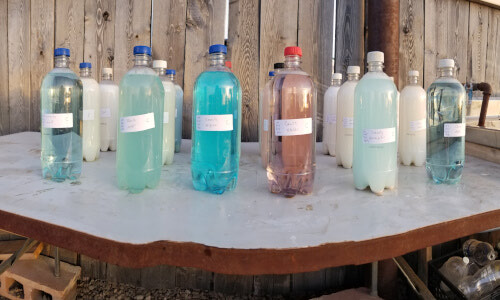The second year of our biostimulants study has wrapped!
This year, our trials had a rotation of wheat, canola, and pea. While it was a tough year of battling droughts and grasshoppers, we still saw some good results!
For this study, we have trials in Lethbridge, Battle River, and in the Peace Region, which allows for unique data. Our trials were done on dryland plots, aside from Lethbridge which was irrigated.
In typical years, we would see a lot more yield than what we got. Our irrigated sites in Lethbridge had larger yields than the dryland sites, due to the severe drought conditions. Given that it wasn't the best year, we were still happy to see with our results.
Due to the nature of this study, our results will be published when the study concludes, next year.
The Challenges and Trials of Biostimulants
One of the biggest challenges farmers face with biostimulants is determining if they're even worth it. As we discovered, there's not much point in using products during a bad year. Unfortunately, unless you can predict the weather you won't know it's a bad year until it after you've purchased or applied the products.
This was evident as our dryland crops responded well to the treatments but still say lower-than-normal yields, due to the severe drought conditions experienced throughout the summer.
Stimulating the fledgling market
At Farming Smarter, we strive to be on the forefront of innovation. That means exploring new territory, like biostimulants. With fledgling markets, like the biostimulant market, its easy to get lost in the grey areas when you don't have all the information. Because the market is new, there's lots of room for it to grow and new products to find their place.
Many of these products are aimed at chasing the last bit of yield available. While chasing that record breaking yield can be appealing, it might not help your return on investment ≥ in some cases, it might even negatively affect it.
We want to learn the best treatments that increase yield while keeping the return of investments in a good place. Biostimulants weren't necessarily the only thing we used in our treatments. We took a more micro look at the soil to see what we could improve.
Because our trials were in very different regions, we had to take the soil into account when making our treatments. While we tried our best to make the treatments similar, we were presented with unique challenges with the varying geography.
To deal with this, we made our treatments out of a mixture of soil-oriented micronutrients and crop-oriented biostimulants.
Opening the door to biostimulants
Because the success of products are dependant on the geography of where they're used, and which crop they're used on, it can be hard to know which products to use.
Thankfully, getting biostimulants is as easy as walking into a retailer and talking with their agronomist. All the products we used in our study were products available at most retailers.
While the future of biostimulants is largely dependant on other variables in the market, there is a push to streamline the process for farmers. We hope that our research helps bring that to fruition.
To learn more about our study, you can visit the Biostimulants project page
Or, check out some of our videos!

